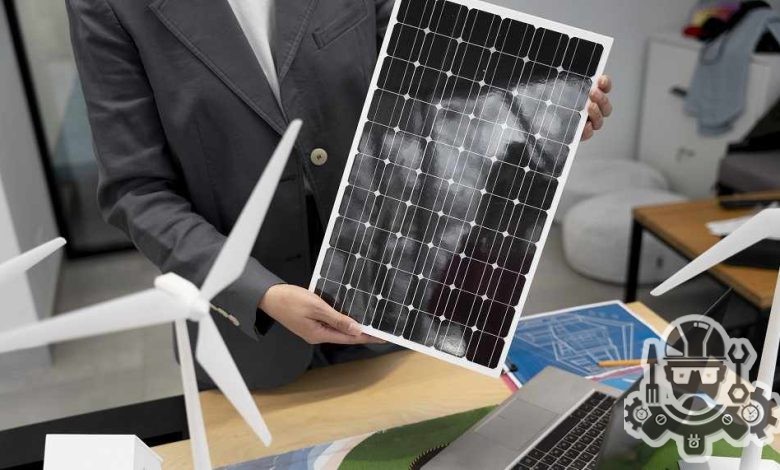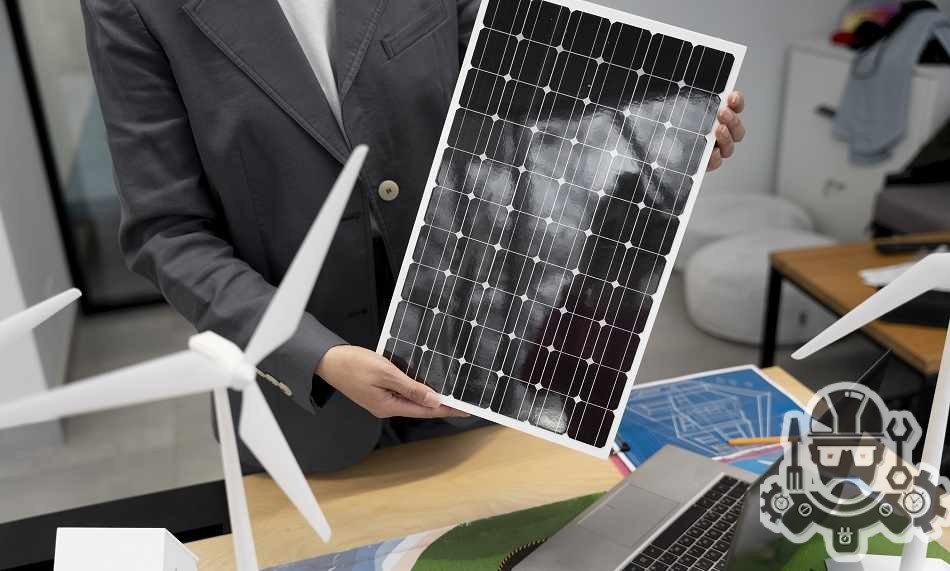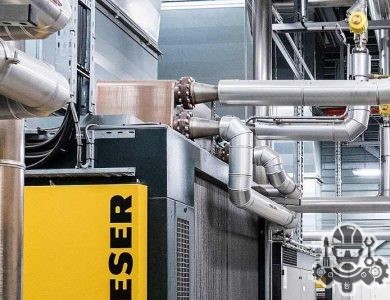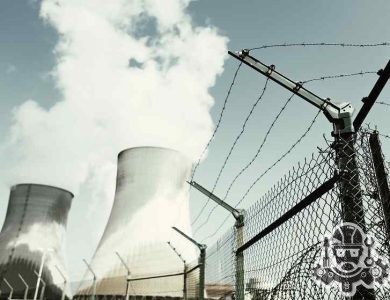Introduction To Solar Panel Efficiency

Solar energy has become increasingly popular as a clean and renewable source of power. As more and more individuals and businesses turn to solar panels to generate electricity, it is crucial to understand the concept of solar panel efficiency. Solar panel efficiency refers to the amount of sunlight that a solar panel can convert into usable energy. Simply put, the higher the efficiency, the more electricity a solar panel can generate.
There are several factors that can affect the efficiency of solar panels. One of the key factors is the angle and orientation of the solar panel. For optimal efficiency, solar panels should be angled towards the sun and positioned in a way that avoids any shading. This allows the panels to receive maximum sunlight throughout the day. Another important factor is the quality of the solar cells used in the panel. High-quality cells are capable of converting a greater amount of sunlight into usable electricity, resulting in higher efficiency.
The latest technological advancements in solar panels have significantly improved their efficiency. One of these advancements is the use of monocrystalline and polycrystalline solar cells. These cells are made from a single crystal structure or multiple crystal fragments, respectively, which enhances their ability to convert sunlight into electricity. Another innovative development is the use of thin-film solar cells, which are made by depositing a thin layer of photovoltaic material onto a substrate. Although these cells have lower efficiency compared to conventional solar cells, they are flexible and can be integrated into various surfaces, making them a popular choice for certain applications.
| Factors Affecting Solar Panel Efficiency | Latest Technological Advancements | Tips for Maximizing Efficiency |
|---|---|---|
|
|
|
To maximize solar panel efficiency, it is important to consider various tips and techniques. Regularly cleaning the panels to remove dirt and debris can significantly improve their performance. In addition, positioning the panels in an area with minimal shade ensures that they receive the maximum amount of sunlight. The use of solar panel tracking systems can also enhance efficiency by automatically adjusting the angle and orientation of the panels to maximize sunlight exposure. Another option is to consider installing solar panel coatings, which can improve the absorption and conversion of sunlight into electricity. Lastly, maintaining an optimal temperature range for the panels ensures that they operate at their highest efficiency.
In conclusion, understanding solar panel efficiency is essential for anyone interested in utilizing solar energy. Factors such as the angle and orientation of the panels, the quality of the solar cells, and the presence of shading or obstructions can affect efficiency. However, with the latest technological advancements, such as monocrystalline and polycrystalline solar cells, thin-film solar cells, and various tips for maximizing efficiency, there are now more opportunities than ever to generate clean and sustainable electricity from solar panels.
Contents
Factors That Affect Solar Panel Efficiency
Solar panel efficiency is an important factor to consider when investing in solar energy. It refers to the amount of sunlight that can be converted into usable electricity by the solar panels. Several factors can affect the efficiency of solar panels, and understanding these factors can help individuals make informed decisions when it comes to choosing and maintaining their solar panel systems.

The first factor that affects solar panel efficiency is the angle and orientation of the panels. Solar panels are typically installed on rooftops or mounted on the ground, and their positioning plays a crucial role in maximizing efficiency. Ideally, solar panels should be tilted at an angle that allows them to capture the maximum amount of sunlight throughout the day. The orientation of the panels, whether facing south, east, or west, also affects their efficiency. It is important to take into account the geographical location and the path of the sun to determine the optimal positioning for solar panels.
The second factor that can impact solar panel efficiency is shading. Shading can significantly reduce the amount of sunlight that reaches the solar panels, thus reducing their overall efficiency. It is essential to keep the solar panels free from any obstructions, such as trees, buildings, or other nearby structures that may cast shadows. Regularly trimming trees or adjusting the panel’s positioning to avoid shading can help ensure maximum efficiency.
The third factor that affects solar panel efficiency is temperature. Solar panels generate electricity by converting sunlight into energy. However, they are also affected by temperature, with higher temperatures potentially reducing their efficiency. When solar panels get too hot, they may experience a decrease in power output. Therefore, it is important to consider factors such as ventilation and heat dissipation when installing solar panels to prevent overheating and optimize their performance.
- Angle and orientation of the panels
- Shading
- Temperature
| Factors | Impact on Solar Panel Efficiency |
|---|---|
| Angle and orientation | Affects the amount of sunlight captured |
| Shading | Reduces the amount of sunlight reaching the panels |
| Temperature | Higher temperatures can decrease efficiency |
Latest Technological Advancements In Solar Panels

The field of solar panel technology has seen tremendous advancements in recent years, paving the way for more efficient and sustainable energy solutions. These advancements have not only enhanced the performance and efficiency of solar panels but have also made them more affordable and accessible to a larger population. In this blog post, we will explore some of the latest technological advancements in solar panels and how they are revolutionizing the renewable energy industry.
One of the most significant advancements in solar panel technology is the development of more efficient solar cells. Traditional solar cells, also known as photovoltaic (PV) cells, have a limited ability to convert sunlight into electricity. However, scientists and engineers have been working tirelessly to improve the efficiency of these cells, leading to the creation of several new types of solar cells.
One such type is the monocrystalline solar cell, which is made from a single crystal structure. These cells have a high energy conversion efficiency, meaning they can generate more electricity from the same amount of sunlight. Monocrystalline solar cells have a distinctive uniform black appearance and are often used in residential and commercial solar panel installations.
- Another technologically advanced type of solar cell is the thin-film solar cell. These cells are made by depositing a thin layer of photovoltaic material onto a substrate, such as glass or plastic. Thin-film solar cells are lightweight, flexible, and can be manufactured using low-cost processes. They are commonly used in portable solar panels and building-integrated photovoltaics.
| Advancement | Description |
|---|---|
| Perovskite Solar Cells | Perovskite solar cells are a promising type of solar cell that has gained significant attention in recent years. They are made using a hybrid organic-inorganic material called perovskite and have shown remarkable efficiency improvements. Perovskite solar cells have the potential to be cheaper and easier to manufacture compared to traditional solar cells. |
| Bifacial Solar Panels | Bifacial solar panels have solar cells on both the front and back sides, allowing them to capture sunlight from multiple angles. This design enables these panels to generate more electricity by utilizing reflected and indirect sunlight. Bifacial solar panels are becoming increasingly popular in commercial and utility-scale solar installations. |
| Solar Roof Tiles | Solar roof tiles, also known as solar shingles, are an innovative advancement in solar panel technology. These tiles are designed to resemble regular roof tiles, blending seamlessly with the overall aesthetics of a building. Solar roof tiles provide an alternative to traditional solar panels and are particularly popular in residential installations. |
In addition to improvements in solar cell technology, advancements have also been made in the field of solar panel materials. Researchers are continuously exploring new materials that can make solar panels more efficient and durable. For instance, the use of perovskite materials in solar cells has shown great promise.
Furthermore, the integration of smart technology into solar panels is another notable advancement. Smart solar panels are equipped with sensors and monitoring systems that can optimize their performance and detect any faults or issues. These panels can automatically adjust their position to maximize sunlight exposure and communicate data to the user for real-time monitoring.
In conclusion, the latest technological advancements in solar panels have transformed the way we harness solar energy. With more efficient solar cells, innovative materials, and the integration of smart technology, solar panels are becoming increasingly dependable, cost-effective, and sustainable. These advancements not only benefit individuals and businesses that choose to adopt solar energy but also contribute to a greener and more sustainable future for our planet.
Tips For Maximizing Solar Panel Efficiency
When it comes to harnessing the power of the sun, solar panels play a crucial role. However, simply installing solar panels is not enough; you also need to ensure that they are functioning at their maximum efficiency. By following a few simple tips, you can make the most out of your solar panels and maximize their effectiveness.
1. Regular Cleaning and Maintenance:
One of the most important tips for maximizing solar panel efficiency is to keep them clean and well-maintained. Over time, dust, dirt, and debris can accumulate on the surface, reducing their ability to absorb sunlight. Regularly cleaning the panels with a soft cloth and mild detergent can help remove any buildup and ensure optimal performance.
2. Optimal Placement:
Proper placement of solar panels is crucial for achieving maximum efficiency. Ideally, panels should be installed in a location that receives direct sunlight for most of the day. Avoid shading from trees, buildings, or other obstacles that can block the sun’s rays. By ensuring unrestricted access to sunlight, you can enhance the overall efficiency of your solar panels.
3. Monitoring Energy Consumption:
Another useful tip for maximizing solar panel efficiency is to monitor your energy consumption. Being aware of how and when you use electricity can help you adjust your usage patterns accordingly. By strategically timing the use of high-energy appliances or devices during peak sunlight hours, you can take full advantage of the power generated by your solar panels.
4. Professional Inspection:
Regular professional inspection of your solar panels can help identify any issues or inefficiencies. It is recommended to have your panels inspected at least once a year by a qualified technician. They can check for any defects, wiring issues, or potential obstructions that may be hindering the performance of your solar panels. Addressing these problems promptly can ensure optimal efficiency and prolong the lifespan of your solar panel system.
By implementing these tips for maximizing solar panel efficiency, you can make the most out of your investment in renewable energy. Not only will you reduce your dependence on traditional energy sources, but you will also contribute to a greener and more sustainable future.
Solar panel efficiency refers to the ratio of the amount of sunlight converted into electricity by a solar panel. It is important because higher efficiency panels convert more sunlight into electricity, resulting in better performance and more energy savings.
Several factors can affect solar panel efficiency, including temperature, shading, dust and dirt, and the quality of the panel materials. Additionally, the angle and direction of the panels, as well as the amount of sunlight they receive, can also impact their efficiency.
Some of the latest advancements in solar panel technology include the use of PERC (Passivated Emitter Rear Contact) cells, half-cut or bifacial panels, and multi-junction solar cells. These technologies aim to increase efficiency, improve durability, and reduce the cost of solar panels.
To maximize solar panel efficiency, it is important to keep them clean and free of dirt or debris. Regular maintenance and cleaning can significantly improve their performance. Additionally, optimizing the panel angle and direction, and avoiding shading, can also help maximize efficiency.
Yes, solar panels can still generate electricity in cloudy weather, although their efficiency may be slightly lower compared to sunny conditions. Modern solar panels are designed to capture diffused sunlight, which means they can still produce energy even on cloudy days.
Solar panels usually come with a warranty of 25 to 30 years, but they can last much longer with proper maintenance. On average, solar panels can continue generating electricity for 30 to 40 years or even longer, making them a long-term and reliable investment.
Yes, many governments around the world offer incentives and subsidies to encourage the adoption of solar energy. These incentives can include tax credits, rebates, and feed-in tariffs, which can help reduce the upfront costs and make solar panel installations more affordable for homeowners and businesses.



